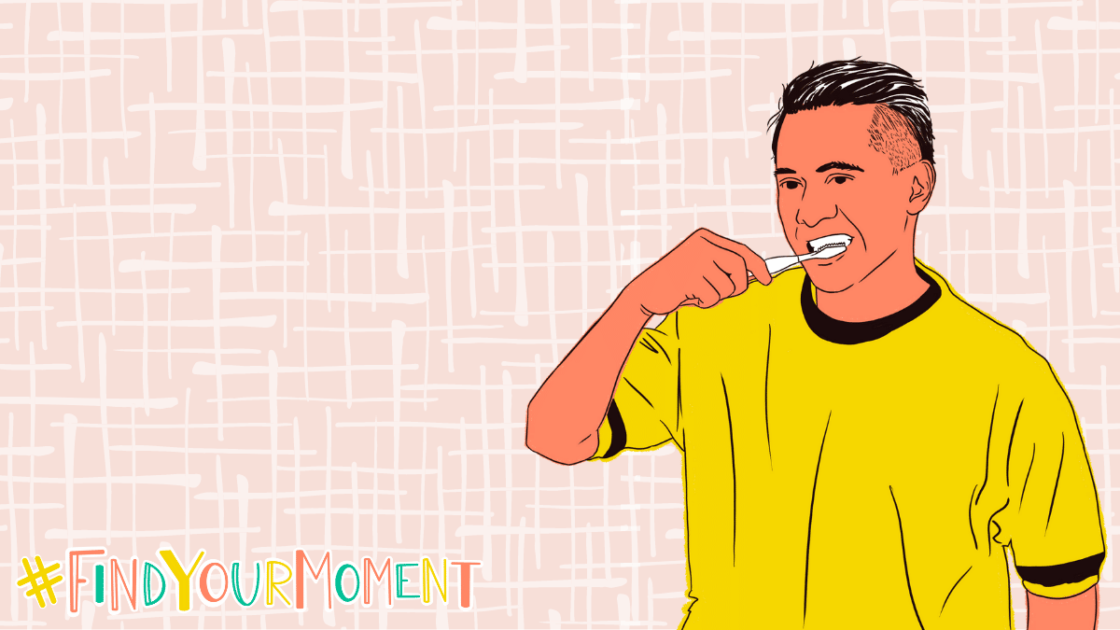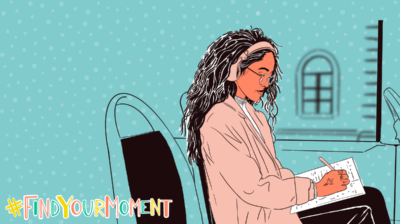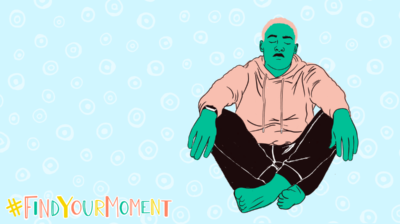How to meditate when you don’t have the money or the time
Use these simple meditation techniques and exercises to create a space for mindfulness in your busy schedule for free.

Mindfulness meditation is the name given to a collection of techniques that help you focus your attention on the present moment. Practising mindfulness meditation can bring many benefits. It can help you manage stress and anxiety, improve your focus, and enhance the quality of your sleep, just to name a few.
Potential benefits aside, meditation isn’t always as easy as it seems, and many people face barriers that lead them to believe the practice isn’t something they can use in their life. Two of the most common barriers that stop people from building a consistent mindfulness meditation practice are money and time. If you feel like you can’t practise mindfulness because you’re too busy or you can’t afford it, the information in this article may help.
How to meditate during busy times
When you feel like you’re too busy to meditate, it might be the time you could benefit from it the most. When you aren’t taking time for self-care, stress and frustration can build up and you can become burned out. If your plate is full and you don’t have time for dedicated meditation sessions, an approach called integrated mindfulness could be a good fit for you. Integrated mindfulness is the practice of weaving small moments of mindfulness into your daily life.
Integrated mindfulness is also a helpful approach if you find yourself forgetting to practise mindfulness. One of the trickiest parts of building a mindfulness practice is turning these new behaviours into habits. Mindfulness has the biggest impact on your life when you do it consistently over a period of time. Lots of people don’t get to enjoy the full benefits of mindfulness meditation because they fall away from it before they can turn it into a habit.
Integrated mindfulness makes this easier by using a technique called habit stacking. Habit stacking involves taking a new habit you want to develop and tying it to an existing habit—something you already do in your daily life. This way, your old habit acts as a reminder to practise your new habit and it becomes much easier to remember. Using this technique, you can use almost any activity as an opportunity to practise mindfulness. Here are some suggestions, but remember you can also come up with your own. The goal is to find a routine that works for you and fits your lifestyle.
Mindful teeth brushing
Brushing your teeth can be a great opportunity for a few minutes of mindfulness meditation. Tune in to the present moment by focusing your attention on your five senses:
- What can you see?
- What does the toothpaste taste like?
- What can you hear?
- What can you smell?
- What can you feel in your body?
Mindful red lights
Most people understand how frustrating it can be to be stuck at a red light, especially when you’re running a bit late. Red lights aren’t all bad though—they may provide a perfect opportunity to grab a few moments to practise mindfulness. The next time you’re stuck in traffic, use that time to do a quick body-scan meditation. Begin paying attention to how your body feels in the moment. Start by focusing on the top of your head, then slowly scan down through your body. If you find that any part of your body feels tense, you can try relaxing it. Keep going until you reach your toes.
This is a great way to turn an otherwise irritating experience into an opportunity to hit the reset button before getting on with the rest of your day.
Mindful room cleaning
Some people love the satisfaction of cleaning their room, while others hate the very thought of it. Love it or hate it though, routine tasks like cleaning your room offer an opportunity to practise mindfulness. As you work, gently draw your attention to the task at hand. As you pick up different objects, notice how they feel in your hands. Notice their weights and textures. Spend some time focusing on your breathing, taking slow deep breaths as you work. You can even play some relaxing music or light your favourite candle to help create a more relaxing and comfortable atmosphere.
Mindful time outside
Mindfulness and nature go great together. Spending time outdoors is good for your body and mind, and integrating some mindfulness meditation can really enhance the experience. The next time you go outside, consider using it as an opportunity to appreciate the world around you:
- Start with a slow, steady, and relaxed pace.
- Try and notice the sights and sounds around you. What is the loudest thing you can hear? What is the quietest thing you can hear?
- Notice how the sun or wind or rain feels on your face.
- If you notice your mind beginning to wander, guide your attention back to your steady pace as you continue to move forward.
Create mindfulness reminder objects
If you find yourself constantly forgetting to practise mindfulness, choosing some reminder objects can be helpful. A reminder object is something that you use to remind your brain to take a few moments for mindfulness. You can use anything you want to be your reminder object. It can be fun to pick out what object you want to use and no two people will have the exact same one.
Some people use stickers. You can place the stickers in different places in your house. When you see the sticker, do a little mindfulness meditation. Beside your front door can be a great spot because you’ll see it before you leave the house. Other people prefer to pick a mindfulness object that they can carry around with them either in their pocket, their wallet, or their bag. This could be a special card, coin, keyring, etc. When they reach in and feel the object, they get their mindful reminder.
How to meditate for free
Many people who try to embark on their own mindfulness meditation journey are discouraged when they come across guidance and resources that can only be accessed by paying a monthly subscription fee. While these meditation subscription services can be useful, lots of people can’t afford them. Fortunately, these services are not the only route to building a mindfulness practice. There are plenty of other ways to get started with mindfulness meditation for free.
If you’re just starting out, guided meditation can be a great way to learn different techniques and find ones that work for you. There is a wide range of free guided mindfulness meditation resources available online:
- The Free Mindfulness Project, set up by a clinical psychologist, offers a collection of guided mindfulness exercises that are free to stream or download.
- YouTube has a wide range of guided mindfulness meditations. The variety of videos available on the site makes it easier to find a guided meditation that works for you. Why not start with spunout’s own 5 minute mindful meditation.
- Beaumont Hospital has a collection of guided mindfulness and relaxation exercises that you can listen to and download for free. All of their content was developed by the hospital’s department of psychology and some of the exercises are even recorded in Irish.
- You can download a free app like FearTools that features a wide range of guided meditation exercises to help relieve anxiety.
- Your local library will also have a selection of books and resources on how to learn to meditate for free.
If guided meditation isn’t for you, you can read our articles on grounding techniques and simple activities to help you live more mindfully, which contain simple instructions on different mindfulness exercises you can try for yourself.
Feeling overwhelmed and want to talk to someone?
- Get anonymous support 24/7 with our text message support service
- Connect with a trained volunteer who will listen to you, and help you to move forward feeling better
- Whatsapp us now or free-text SPUNOUT to 50808 to begin.
- Find out more about our text message support service
If you are a customer of the 48 or An Post network or cannot get through using the ‘50808’ short code please text HELLO to 086 1800 280 (standard message rates may apply). Some smaller networks do not support short codes like ‘50808’.






